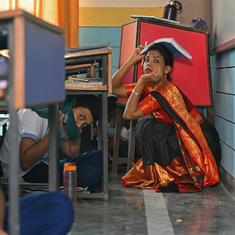From December 4, 1944, to January 30, 1945, an Afghan Military Mission to India toured the country, visiting army and air force divisions, witnessing weapon demonstrations and training events, and meeting military and civil functionaries.
A stable, independent Afghanistan on friendly terms with India was seen as vital to the defence of India and the Empire. Led by Lieutenant General Muhammad Umar Khan, Chief of the Afghan General Staff, the tour was an opportunity to strengthen military and political ties between the Government of Afghanistan, the Government of India, and the British Government.
The Military Attaché at Kabul, Colonel Alexander Stalker Lancaster, had been heavily involved in the preparation of the tour programme, and accompanied the Mission group throughout their stay. He submitted an incredibly detailed report following its completion, which makes for interesting reading.

The report consisted of a tour summary, notes on Lancaster’s impressions of the Mission delegates, and a fully annotated tour programme, providing a timeline of events and visits alongside Lancaster’s comments.

As might be expected, the report contains details of weapon demonstrations, tours of barracks and ammunition factories, and includes details of the scale of the preparations for war against Japan. According to Lancaster the Afghan Mission were suitably impressed, although the report does provide information on one hair-raising incident at a firing demonstration for the 4.2” mortar:

Interestingly, the report also provides details of the entertainments laid on for the Mission. These included regular dinner engagements with army and air force personnel, diplomats and Government Officials, and even a number of cinema trips.
On December 20, following a day of weapons demonstrations, the Mission were shown “Training films on Camoflage [sic] and Use of Compass, War News Reels and an entertainment film”. On 4 January “[the] Mission attended Dinapur Cinema. By chance a colour film of Afghan scenes taken by the Thaw Caravan expedition in 1939 was shown. The commentary was given by Lowell Thomas in his well known [sic] style. Fortunately the Afghans treated it as a joke”. During their trip the Mission saw several other films, including Kismet, Get Cracking (starring George Formby), Lady in the Dark, and the play adaptations Bhagwan Buddha and Charlie’s Aunt.

Lancaster judged that the Mission had been “an unqualified success”, and positive reports appeared in the Afghan publication Islah. In the years that followed the Mission, the Government of India agreed to supply arms, equipment and training at a discounted rate to Afghanistan, in what became known as ‘Scheme Lancaster’.
The file containing the report, IOR/L/PS/12/2217, is part of a series of records compiled by the India Office Political (External) Department related to arms, ammunition and arms traffic. These records are currently being catalogued and digitised, and should be available for access through the Qatar Digital Library portal later in the year.
This article first appeared on British Library's Untold Lives blog.










